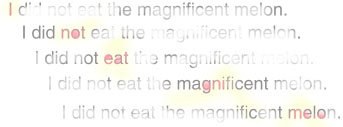

 |
Greg Kochanski |  |
G. Kochanski C. Alvey, C. Orphanidou, J. Coleman, A McIntyre and S. Golding
The slides from the talk are available at http://kochanski.org/gpk/papers/2008/CarsTalk.pdf
(This abstract is part of doi:10.1007/s11548-008-0167-z , published in the International Journal of Computer Assisted Radiology and Surgery, Volume 3, Supplement 1, June 2008, pages 17-21. The talk will be presented at the Computer Assisted Radiology and Surgery: 22nd International Congress and Exhibition, Barcelona, Spain, 26 June 2008. An extended version of this talk has been accepted for publication in the International Journal of Compter Assisted Radiography and Surgery, IJCARS. At least until publication, it may be found at http://kochanski.org/gpk/papers/2008/CARS.pdf . )
Purpose: The use of gated or ECG triggered MR is a well-established technique, and developments in coil technology have enabled this approach to be applied to areas other than the heart. However, the image quality of gated (ECG or cine) versus non-gated or real-time has not been extensively evaluated in the mouth. We evaluate two image sequences by developing an automatic image processing technique which compares how well the image represents known anatomy.
Methods: Four subjects practised experimental poly-syllabic sentences prior to MR scanning. Using a 1.5 T MR unit, we acquired comparable gated (using an artificial trigger) and non-gated sagittal images during speech. We then used an image processing algorithm to model the image grey along lines that cross the airway. This involved an eight parameter non-linear equation to model of proton densities, edges, and dimensions.
Results: Gated and non-gated images show similar spatial resolution, with non-gated images being slightly sharper (10% better resolution, less than 1 pixel). However, the gated sequences generated images of substantially lower inherent noise, and substantially better discrimination between air and tissue. Additionally, the gated sequences demonstrate a very much greater temporal resolution.
Conclusion: Overall, image quality is better with gated imaging techniques, especially given their superior temporal resolution. Gated techniques are limited by the repeatability of the motions involved, and we have shown that speech to a metronome can be sufficiently repeatable to allow high-quality gated magnetic resonance imaging images. We suggest that gated sequences may be useful for evaluating other types of repetitive movement involving the joints and limb motions.
The slides from the talk (with notes) may be found here.
| [ Papers | kochanski.org | Phonetics Lab | Oxford ] | Last Modified Fri Jul 18 08:04:06 2008 | Greg Kochanski: [ Home ] |